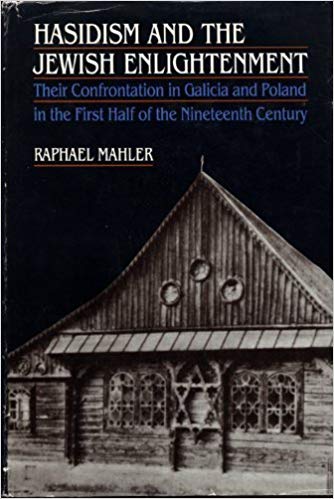Talmudic Sequels Also Contain Racism Mahler

Hasidism and the Jewish Enlightenment, by Raphael Mahler. 1984
Jewish Racism in Parts of the Midrash and the Kabbalah. Jewish Prosperity in Poland
This work focuses on how the Hasidic movement developed, and how it interacted with other Jews, and gentiles. It also provides insight into the situation facing Jews in the Russian-ruled and the Austrian-ruled parts of Poland. Much attention is devoted to the criticisms against Hasidism that arose in Jewish and gentile circles alike. This work is relatively technical, requiring the reader to have a good background in 19th-century life to appreciate fully. It has a helpful glossary of Jewish terms.
THE “JEWS HAD IT BAD” MYTH. QUITE A FEW JEWS ACTUALLY DID QUITE WELL
In 19th-century occupied Poland, there was a sharp disparity between poor and rich Jews: “The wealthy Jews did not suffer from the discrimination endured by the masses of their brethren; on the contrary, they enjoyed extensive privileges. For example, the kosher meat tax was hardly felt.” (p. 192). Some of the Maskilim (enlightened Jews) considered the small-town and village Hasidic Jews as ones that exploit the peasants. (p. 17).
A SEQUEL TO THE TALMUD AND ITS RACIST TEACHINGS ABOUT NON-JEWS
Much has been said about Christian exclusivity and how it acted against Jews, and how Christians viewed Jews as responsible for the Crucifixion of Christ (deicide). Although some people obviously would rather avoid the truth, or to rationalize it away, Mahler is candid about the fact that Jewish prejudices against Christians were no less severe.
Parts of the Jewish religion, even unto recent times, were inescapably racist. Mahler comments: “The views of the Hasidim…were a direct outgrowth and development of the Weltanschauung of the Kabbalah. The Jewish people were not simply the chosen, but were the only people of God…According to the Midrash, the whole world was created only for the sake of the Jews…a negative attitude toward Gentiles, which took the form of contempt, was also an unavoidable consequence of this position. As Mendel of Rymanow put it, ‘A Gentile does not have a heart, although he has an organ that resembles a heart.'” (pp. 16-17). The Rabbi of Izbica taught that Jews are innately good, even when they do evil deeds, simply because they are Jews. Gentiles are innately bad, even if they do good deeds. (p. 307).
JEWS, LIKE POLISH PEASANTS, COULD BE SUPERSTITIOUS
At times, Polish Jews had looked down on Polish peasants as superstitious. Mahler’s comment is therefore ironic: “In contrast to the religious and rationalistic Christian sects that opposed superstitions as adamantly as they did secular science, the Hasidic movement was permeated by superstitions of all kinds.” (p. 16).
ASPECTS OF HASIDIC THEOLOGY OVERLAP WITH THAT OF JEWISH CHRISTIANITY
This work includes fascinating theological information. For example, Christians have understood Isaiah 53 as a prophecy foretelling Jesus Christ. Interestingly, the Hasidim also taught of Isaiah 53 as referring to the Messiah suffering for the sins of all of Israel. (p. 257). There is also an interesting theme about two Messiahs–the son of Joseph and the son of David. (p. 260). Jewish Christians have understood these as referring to one Messiah–Jesus–coming at two different times in history: His First and Second Comings.
To see a series of truncated reviews in a Category click on that Category:
- All reviews
- Anti-Christian Tendencies
- Anti-Polish Trends
- Censorship on Poles and Jews
- Communization of Poland
- Cultural Marxism
- German Guilt Dilution
- Holocaust Industry
- Interwar Polish-Jewish Relations
- Jewish Collaboration
- Jewish Economic Dominance
- Jews Antagonize Poland
- Jews Not Faultless
- Jews' Holocaust Dominates
- Jews' Holocaust Non-Special
- Nazi Crimes and Communist Crimes Were Equal
- Opinion-Forming Anti-Polonism
- Pogrom Mongering
- Poland in World War II
- Polish Jew-Rescue Ingratitude
- Polish Nationalism
- Polish Non-Complicity
- Polish-Ukrainian Relations
- Polokaust
- Premodern Poland
- Recent Polish-Jewish Relations
- The Decadent West
- The Jew as Other
- Understanding Nazi Germany
- Why Jews a "Problem"
- Zydokomuna